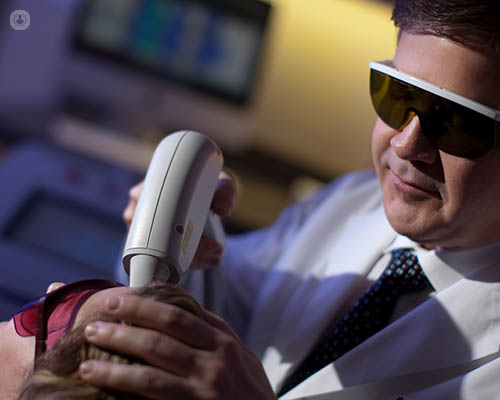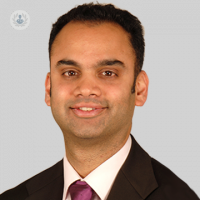How are lasers used in dermatology?
Autore:Lasers are now widely used across many medical specialties, perhaps most famously in ophthalmology due to the popularity of laser eye surgery. However, lasers can be used in many ways, from treating an enlarged prostate to the removal of tumours. Here, consultant dermatologist and dermatological surgeon, Dr Raj Mallipeddi, explains how lasers can be used to treat various skin conditions.

Why are lasers used in medicine?
Lasers are intense powerful beams of light with only one wavelength to target a particular area of the body. Lasers have multiple dermatological uses, and there are different types of laser used for different procedures. For example, lasers can target melanin, hair follicles, or water, which burns away layers of the skin.
How does a dermatologist use a laser?
Lasers have been used in dermatology for many years now, but treatment is constantly developing and advancing. Laser treatment is advantageous for patients in that it is often non-invasive, and offers excellent long-term results.
Some common conditions a dermatologist is able to treat with a laser include:
1. Acne scars
Laser treatment can improve the appearance of acne scars, which are permanent and can be troublesome for some individuals. The light in this case targets different layers of the skin, helping to remove damaged tissue, while stimulating new collagen cells and boosting growth of fresh, healthy skin.
2. Hair removal
Laser hair removal is one of the most popular procedures performed, as it can help to remove unwanted facial and body hair in a safe, effective way. Lasers specifically designed for hair removal can be used on most parts of the body, including the back, chest, and pubic area. Dark hair responds best since it is the pigment in the hair which is being targeted.
3. Thread veins
Thread veins are very fine, often wiggly little lines which can appear on any part of the body, often appearing on the face. They are a normal part of ageing, but some people find them to be unsightly and seek treatment to have them removed. Laser treatment is an option, using brief pulses of light to destroy small blood vessels in the skin. Different types of laser are available depending on the vein – some are red and thin, near the skin’s surface, while others are deeper and are purple or blue in colour.
4. Rosacea
Rosacea is a condition which causes redness to appear in the face, often starting as a tendency to blush, and developing to redness and visible blood vessels in different areas of the face. Rosacea can also thicken the skin on the nose, and can cause dry, irritated skin around the eyes. There is no permanent cure for rosacea, but it can be managed well, laser treatment being an option. Pulsed light helps to get rid of, or reduce the appearance of blood vessels in the skin, while laser resurfacing can reduce the bulkiness of the skin and help to stimulate new tissue growth.

